By Ceyhun Bozkurt
Turkish President Recep Tayyip Erdogan will visit Sochi, Russia, on September 29th and have a diplomatic meeting with the Russian President Vladimir Putin. The meeting between the two leaders in Sochi, is expected to be one of the most critical encounters in the recent years. It is speculated that the leaders will discuss many different topics. To name a few;
- Tensions in Syria in general, and specifically the Idlib problem,
- The roadmap ahead concerning the current situation in the South Caucasus,
- The resolution for the Eastern Mediterranean/Libya crisis,
- The tensions that appeared between the two countries concerning Crimea on discourse level,
- Strengthening of the partnership in the defense industry that started with the purchase of S-400 missile systems.
Taking a deeper analysis of these topics, it is very clear that the two countries have a strong communication in areas that will determine the future geopolitical situation in the world and throughout our wider region within the global struggle for hegemony. This is because the Middle East, Eastern Mediterranean, South Caucasus and the Black Sea regions stand out as the main geographies that the West has been focusing on both militarily and politically, in order to both contain China and Russia, and also to control the regional powers and nation-states such as Turkey. Due to the criticality of both land and sea routes, the rising tensions in these regions have the Western world on one side, and the countries of the region on the other side. However, the fact that the regional countries can also experience tensions within themselves, creates an advantage for the West which can stand as a unified bloc against the countries our region. As a matter of fact, the US-led Western bloc is purposefully taking actions to fuel the tensions between countries in the region. And one of the theaters where the West pursues such a plan is Syria.
Being in NATO partnership with Turkey, the Western world has pursued policies that increased the tensions, fueled the civil war and attempted to re-design the geography in the country since the beginning of the Syrian crisis. Terrorist organizations and chaos seeking entities took advantage of the circumstances the West has created. In fact, many of these organizations were supported by the Western intelligence services and led in accordance with the Atlantic interests. The ISIS/Daesh is one of the most well-known, among these terrorist groups. The PKK/PYD terror group (the term 2Terror group’ has been used by Aysel Tugluk herself, a prominent politician of the political branch of the PKK terrorist group) has advanced on the area left behind by ISIS/DAESH in order to create a ‘Kurdish Corridor’ from Basra till the Eastern Mediterranean – a corridor that by the way would also cause harm on the Kurds themselves.
Whatever territory the PYD/YPG wanted to invade, the ISIS was first directed to that area, and based on the legitimacy established among the Western public opinion, the Syrian branch of the PKK terrorist group became the “freedom fighters”, by liberating those areas back from ISIS. The former US President Barack Obama’s definition of this organization as “our ground forces in Syria” provoked a huge reaction in Turkey.
In the country that has been turned into a hotbed for terrorism, the Damascus administration’s disproportionate use of force in the fight against terrorism, which occasionally also had a negatively affect on civilians who supported the opposition, has deepened the turmoil in Syria.
Turkey’s compliance on the Western policies until the coup attempt on July 15th 2016, have caused rising tensions between Turkey and Syria/Russia. However, with the repelling of the unsuccessful coup attempt, Turkey has drastically changed its view of the West especially towards Washington. Both the initiation of the Astana Process between Turkey and Russia/Iran, and the purchase of the S-400 systems, were the result of this paradigmatic shift after July 15th. Especially the fact that these three countries have agreed on basic common ground despite different perspectives and advanced the Astana Process has resulted in de-escalation in much of the Syrian geography. Thanks to this process, where Turkey also had carried out a military campaign against the terrorist organizations that targeted Ankara, the constitutional negotiations in Syria could find the necessary basis.
Regions of conflict: Idlib and East of the Euphrates
Heavily disturbed by this process, Washington persistently sought to undermine the Astana process. Yet it failed miserably. The Trump-era Secretary of State Mike Pompeo has expressed his disturbance with the process, when defining the Turkish military operation Olive Branch against the terrorist activities in Afrin as a “punch hole in the wall”. The Former US Special Envoy to Syria James Jeffrey has explained what that punch hole was when saying “Manbij was of a strategic importance since the YPG could have advanced from that area towards Afrin, but that is off the table now”. Thus, the corridor plan was also scrapped away. Everything was not sunshine and butterflies either, of course. Developments in the two specific regions have hampered the process. These two regions were:
– The Idlib Governorate and its surroundings
– The regions occupied by the PKK/PYD terrorist groups.
The sensitivity over the territorial integrity of Syria was very prominent both in the Astana trio and by the Damascus government despite slight differences in the view of the PKK/PYD terrorist groups. The clearest stance against this organization was taken by Turkey, which maintains its position. Turkey has been actively fighting against the PKK terrorist group since 1984. Ankara has also the clearest rejection and has led the most effective fight against the PYD terrorist group, the Syrian leg of the wider KCK terrorist organization, incorporated the PKK into itself. Russia, Syria and Iran on the other hand, sometimes clash and sometimes negotiate with this organization, or as in the case of Tel Rifat, sometimes even open up space for it. This of course creates a negative perception in Turkey towards Moscow, Tehran and Damascus.
There is a similar confrontation in Idlib, which we will further discuss below. Here, while Turkey opposes the military operation, Moscow and Damascus are focusing on military options, including a total sweep-out. However, the fact that there is a very large civilian population in Idlib shows that Turkey has a point here as well.
Large numbers of civilians passed through the corridor leading to Idlib along with armed groups, during the Syrian Arab Army’s advance, and the city’s population has reached 3 million people, up from about 165,000 in 2010, by a sudden internal immigration wave from Aleppo, Damascus, Homs, Hama and Deraa. And this is where the troubles started. Armed groups, including some terrorist groups, combined with such a large civilian population, have brought up questions of security for the region. Fearing a new wave of migration, Turkey has resisted any military actions by Russian and Iranian-backed forces and Damascus-led Syrian Army. For that reason, the Idlib issue was repeatedly discussed both at the Astana summits and during bilateral summits between the Turkish and Russian leaders or delegations. As part of its 2017 agreement with Russia in Astana, Turkey began establishing observation posts for monitoring the ceasefire area in the Idlib de-escalation zone on October 12th 2017.
Agreement of September 2018
The meeting between the President Erdogan and his Russian counterpart Putin in Sochi, and their agreement on the establishment of a demilitarized zone in Idlib on September 17th 2018, has delayed the military option, albeit not taking it off the table permanently. The agreement planned to establish a de-escalation zone of 15-20-kilometer width and 250-kilometer length, along the regions controlled by armed organizations. The first ten articles of the 10-point memorandum of understanding, were as follows:
- The Idlib de-escalation zone will be protected. The Turkish observation posts will be strengthened.
- The Russian Federation will take the necessary measures to avoid any military conflicts and attacks towards Idlib, and the status quo will be maintained.
- A demilitarized zone of 15-20 km width will be created. The boundaries of this demilitarized zone will be determined on the field.
- All radical terrorist groups will be removed from the demilitarized zone by October 15th.
- All heavy and medium weapons including tanks, multiple rocket launchers (MLRS), artilleries and mortars will have to withdraw from the demilitarized zone in Idlib until October 10th.
- Joint patrols of this demilitarized zone will be carried out by both Turkish and Russian troops. Monitoring will also be carried out from the air by drones.
- Security of the M4-M5 motorways will be ensured until the end of the year and will be opened to civilian traffic.
- Effective measures will be taken to ensure a complied ceasefire in Idlib. Iran, Turkey and Russia will develop a joint coordination center.
- The two sides would reiterate their “determination to combat terrorism in Syria in all forms and manifestations”.
Under the agreement, it was concluded that terrorist organizations and armed groups, and mainly Hayat Tahrir al-Sham (HTS), would evacuate the demilitarized zone and all heavy and medium weapons would be withdrawn from the zone until October 15th 2018.
Additional protocol on Idlib, March 2020
But the realities of the ground did not suit well to what was discussed at the table. As a result of open conflicts between the armed terrorist groups and the Syrian Arab Army, some of these agreed articles could not be implemented. Tensions have escalated so high that the Russian-backed Syrian Arab Army has also begun to pressurize the Turkish Army itself. That tension resulted in an airstrike on an observation post on February 27th 2020, where 34 Turkish soldiers lost their lives. The ‘Operation Peace Shield’ of the Turkish Armed Forces against the Damascus government right after the airstrike, has inflicted some heavy losses on the Syrian Arab Army. The clashes again ended with the negotiation in an Erdogan-Putin summit. The two leaders have reached a new agreement in Sochi on March 5th 2020, adding three protocols to the existing Idlib agreement. The following three articles were included in the “Additional Protocol to the Memorandum on the Stabilization of the Situation in the Idlib De-Escalation Area”:
- All military actions along the line of contact in the Idlib De-escalation area will be ceased, starting from 00:01 of March 6th 2020.
- A security corridor will be established 6 km deep to the north and 6 km deep to the south from highway M4. Specific parameters of the functioning of the security corridor will be agreed between the Defense Ministries of the Turkish Republic and the Russian Federation within 7 days.
- On March 15, 2020, joint Turkish-Russian patrolling will begin along highway M4 from the settlement of Trumba (2 km to the west from Saraqib) to the settlement of Ain-AI-Havr.
However, the desired goals were once again not achieved. One of the main reasons was that the control of the M4 highway, which starts from the Iraqi border and stretches all the way to the Eastern Mediterranean city of Latakia, has not been transferred to the Syrian Arab Army, resulting in frequent ceasefire violations ever since. Apart from the clashes between armed groups and the Syrian Arab Army, terrorist attacks by the same armed groups against the Turkish Army, were also calling attention. The facts that the groups that carried out these attacks were recently established, increases the likelihood that they are just a simple tool for provocation and were directed by third party intelligence services. Turkey has been struck by both the Russian-Syrian attacks and such terror attacks in this process.
The military pressures of Russia from the air and Syria from the ground have been intensifying since July 2021. Some heavy Russian airstrikes took place especially in this month. It is important to note that the aerial bombardment that targeted the shelters, munitions depots and underground tunnels of these groups, mostly took place on the southern portions of the M4 highway and around Mount Zawiya, where Turkey has established its largest defensive locations. Some of those bombs, falling right next to TSK observation posts in the region were interpreted as a Russian pressure on Turkey. And this Russian pressure continued since the Turkish Air Force was not authorized to use the Syrian airspace and the Turkish air defense systems in that area were not really capable of retaliating a Russian airstrike. Thus, the Turkish Army went on to increase its presence in Idlib, as a retaliation.
Another important development in this process were the airstrikes on areas that are adjacent to Idlib. The strength of the Syrian National Army, which Turkey considers an ally against PKK/PYD terrorist organization’s aggression, has encountered Russian airstrikes. Although this Russian move has been interpreted as a very heavy diplomatic move via its military force, Serhat Erkmen, an expert who closely analyzes the region said that “it seems now that these airstrikes are a preparation for a larger military operation, instead of a ‘diplomatic tool'”.
In conclusion
The crisis in Idlib, which includes several armed terrorist groups and millions of civilians, will surely be on the negotiations table during the two leaders’ meeting in Sochi. Although they have solved every major crisis so far, it is still not known what will be the actual outcome of this Erdogan-Putin meeting, yet even the slightest possibility of a conflict between the two countries in the region is enough to cheer up the United States and the PYD/PKK terrorist group.
We will wait and see the possible Turkish operations in the face of a refugee wave as a result of the provocations of terrorist groups, and what kind of a compromise will emerge, when it is clear that Russia and Syria wishes the control over the south of the M4 highway.








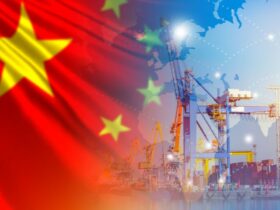
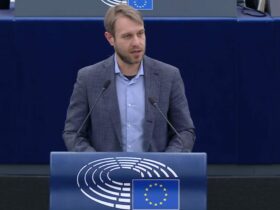
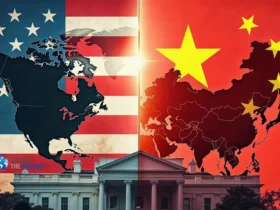
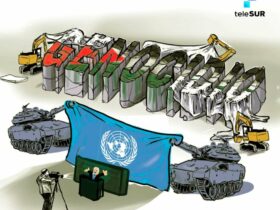
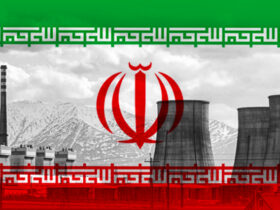
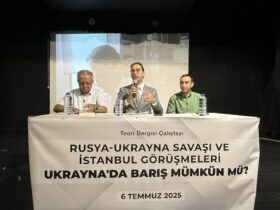
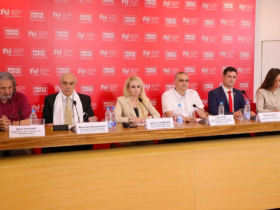
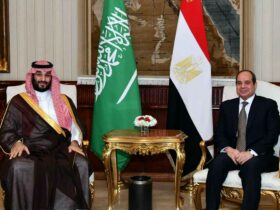

Leave a Reply